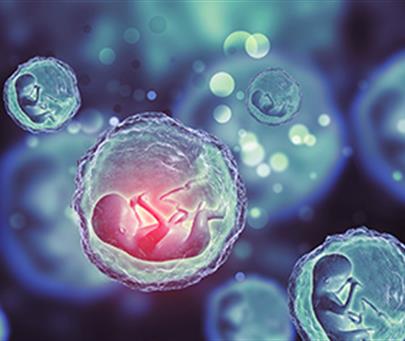If the result of the screening report for chromosomal disorders during high-risk pregnancy is reported or there are signs of chromosomal disorders in the ultrasound of the fetus, in most cases it is recommended to check and determine the chromosomal status of the fetus by performing diagnostic methods during pregnancy. These diagnostic tests can be performed on fetal samples obtained from placental villus sampling (CVS) or from amniotic fluid around the fetus (amniocentesis).
Our colleagues in the genetics department, with years of experience in the field of prenatal diagnosis, offer the following types of genetic diagnostic tests on fetal samples:
- QF-PCR test
- MLPA test
- karyotype
- Fluorescent in situ hybridization (FISH)
1. QF-PCR technique:
If you want to know more about this test, we must say that in recent years, quantitative fluorescent technique or QF-PCR has been used for rapid prenatal diagnosis of common chromosomal aneuploidy. In this method, short repeats (STR) or markers present on the DNA of chromosomes 13, 18 and 21 are amplified, labeled with fluorescent markers and its amount is measured by electrophoresis.
-
Benefits of using QF-PCR technique:
This technique detects chromosomal abnormalities of chromosomes 13, 18 and 21 with high sensitivity and specificities. In QF-PCR method, unlike the karyotype method, there is no need to culture amnion cells; Therefore, it will save money and time. The low cost of this test enables quick prenatal diagnosis for all pregnancies. For this reason, the anxiety caused by the long-term waiting of the parents to complete the results of the karyotype test has been reduced. This method has a very high sensitivity and as a result very little sample is required. The effectiveness of this technique is not affected by the fetal age and can be performed at any time of pregnancy.
-
Limitations of QF-PCR technique:
In this method, mosaicism cannot be detected. It does not have the power to detect disorders in other chromosomes except chromosomes 13, 18 and 21. QF-PCR is not a reliable method to detect deletions.
Rapid prenatal genetic diagnosis methods

2. MLPA technique:
This technique is also a rapid method for prenatal diagnosis of common chromosomal aneuploidies. In this method, by designing a set of probes that each complement a specific region of the genome, the number of gene copies and deletions and duplications in a region can be determined. The basis of this method is based on the hybridization of each pair of probes with a specific sequence in the genome.
-
Advantages of using MLPA technique:
The main advantage of these tests is the ability to answer in a short time. Also, having high sensitivity and characteristics and not being influenced by the gestational age are among the important advantages of this technique.
-
Limitations of MLPA technique:
In this method, chromosomal mosaics cannot be detected.
3. FISH technique:
In the FISH technique, different types of probes labeled with fluorescent dyes and made of DNA and complementary to certain regions of the chromosome are used. These probes stick specifically in place. In the absence of aneuploidy, two signs are observed from each probe, in the presence of trisomy, three signs and in the presence of monosomy, one sign is observed. This technique is one of the methods that can be used to detect the common aneuploidy of chromosomes 13, 18, 21, X and Y.
-
Benefits of FISH technique for prenatal genetic diagnosis:
This technique is a suitable and reliable method to detect structural abnormalities and a number of chromosomes.
-
Disadvantages of FISH technique for prenatal genetic diagnosis:
- This method is expensive and costly.
- This method is not able to identify small additions and deletions.
- It takes a long time to prepare the test result.
What conditions are required to perform prenatal diagnostic tests?
Before performing any diagnostic test in the field of genetics, detailed genealogy studies and a detailed genetic counseling are necessary. If your doctor has recommended a prenatal diagnostic test, we at Hope Generation Medical Institute are by your side.
From consultation and sampling to testing and interpretation of its results, it can be provided by the experienced experts of this institution.
If you want the test of amniotic fluid or amniotic fluid to be done at the comprehensive genetics center of Hope Generation Medical Institute, it is necessary that your doctor, as the person receiving the sample, put the amniotic fluid or amniotic fluid in special tubes, with a label with the name and sample characteristics. Prepare together with the mother's venous blood sample (5 to 10 ml in a tube dipped in EDTA anticoagulant) and then send the samples to the laboratory.
You might be wondering why a mother's blood sample is needed? In response, it can be said that in some cases where the result of the fetal genetic test is ambiguous, the maternal blood sample is used for better diagnosis.
"Before sending the sample, please coordinate with our colleagues in the genetics department"

